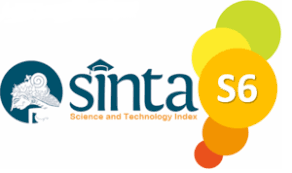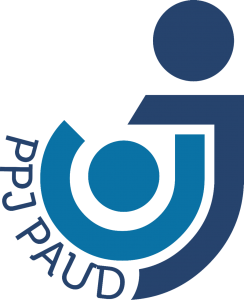Benefits of Vestibular Exercises Affecting Performance in Early Childhood
Keywords:
Early Childhood, Emotional Regulation, Motor System, Sensory System, Social Regulation, Vestibular ExercisesAbstract
Specifically will explore the effects of vestibular exercises on sensory and motor systems, as well as emotional and social regulation, which impact the performance of early childhood learners. This qualitative study is grounded in the constructivist paradigm, involving the participation of eight Grade 1 learners, eight Grade 2 learners, and eight Grade 3 learners in South Africa. Additionally, three parents completed weekly observation sheets to monitor the learners' performance. Data collection techniques in this study used questionnaires and observations. The result shows that vestibular exercises serve as a relay, transferring signals to other sensory systems, which then convey them to the motor system. This interconnected process is likely to impact scholastic performance positively. By framing this within the social model theory, we recognize the importance of creating an inclusive environment where all learners can engage in these exercises. This model emphasizes the role of societal structures in enabling or restricting participation, highlighting that providing access to vestibular exercises can reduce barriers and promote equal developmental opportunities. Hence, it can be concluded that vestibular exercises benefit developmental areas in early childhood, thereby influencing academic performance. Through the social model theory lens, this underscores the importance of inclusive practices that support all learners in reaching their full potential.
References
Akay, T., & Murray, A. J. (2021). Relative Contribution of Proprioceptive and Vestibular Sensory Systems to Locomotion: Opportunities for Discovery in The Age of Molecular Science. International Journal of Molecular Sciences, 22(3), 1467.
Akbar, Z. (2020). Sensory Integration and Functional Movement: A Guide to Optimal Development in Early Childhood. 4th International Conference on Arts Language and Culture (ICALC 2019), 311–319. Https://Www.Atlantis-Press.Com/Proceedings/Icalc-19/125937636
Archana, R., Rani, S., & Kumari, S. K. (2020). The Effectiveness of Vestibular Stimulation by Rocking snd Vestibular Exercises on Auditory and Visual Reaction Time and Quality of Life In Elderly. Indian Journal of Public Health Research & Development, 11(5), 55–60.
Aslan, M., & Çıkar, İ. (2019). The School Readiness Of 60-65 Months Old Students: A Case Study. International Journal of Contemporary Educational Research, 6(1), 86–99.
Atwa, A. S. E. S., El Maksoud, G. M. A., & Mahgoub, E. A. E. M. (2023). Effect of a Vestibular-Stimulating Training Program on Motor Skills in Conjunction with Cognitive Aptitude of Young School-Aged Children. Physiotherapy Quarterly, 31(3), 65–79.
Ayres, A. J., & Robbins, J. (2005). Sensory Integration and the Child: Understanding Hidden Sensory Challenges. Western Psychological Services. Https://Books.Google.Com/Books?Hl=Id&Lr=&Id=-7nefnfswo0c&Oi=Fnd&Pg=PR9&Dq=Ayers,+A.+J.,+%26+Robbins,+J.+(2005).+Sensory+Integration+And+The+Child.+Western+Psychological+Services.&Ots=Injvbgjapk&Sig=J_Fooced5f5mov5ktwlasfkylt0
Berthoz, A. (2002). The Brain’s Sense of Movement. Harvard University Press. Https://Books.Google.Com/Books?Hl=Id&Lr=&Id=Ccfmeaaaqbaj&Oi=Fnd&Pg=IA5&Dq=Berthoz,+A.+(2000).+The+Brain%E2%80%99s+Sense+Of+Movement.+Harvard+College.&Ots=Hnvtszts6d&Sig=13nsuuy1axber-Ichvyo57u_L_8
Blythe, S. G. (2017). Attention, Balance and Coordination: The ABC Of Learning Success. John Wiley & Sons. Https://Books.Google.Com/Books?Hl=Id&Lr=&Id=X7wodgaaqbaj&Oi=Fnd&Pg=PR7&Dq=Blythe,+S.+(2009).+Attention,+Balance+And+Coordination:+The+A.B.C+Of+Learning+Success.+Wiley.&Ots=67im8dkdix&Sig=Dtkvconglke-Gluxeeu6bzk5bq4
Booyse, J. J., Le Roux, C. S., Seroto, J., & Wolhuter, C. C. (2013). A History of Schooling In South Africa: Method and Context. Van Schaik Publishers.
Brazelton, M. (2013). Sensory Integration and The Child. Western Psychological Services.
Brink, H., & Van Der Walt, C. (2006). Fundamentals Of Research Methodology for Health Care Professionals. Juta And Company Ltd. Https://Books.Google.Com/Books?Hl=Id&Lr=&Id=Yznpyoa4jk0c&Oi=Fnd&Pg=PA1&Dq=Brink,+H.,+%26+Van+Der+Walt,+C.+(2010).+Fundamentals+Of+Research+Methodology+For+Health+Care+Professionals.+Juta+And+Company+Ltd.&Ots=9xdixenaym&Sig=Uol5ipu1wrboghd-Pdu-T76tnhu
Cameron, C. E., Cottone, E. A., Murrah, W. M., & Grissmer, D. W. (2016). How Are Motor Skills Linked to Children’s School Performance and Academic Achievement? Child Development Perspectives, 10(2), 93–98. Https://Doi.Org/10.1111/Cdep.12168
Chastain, G. (2018). Attention. Salem Press Encyclopedia.
Cheatum, B. A., & Hammond, A. A. (2000). Physical Activities for Improving Children’s Learning and Behavior: A Guide to Sensory Motor Development. Human Kinetics. Https://Books.Google.Com/Books?Hl=Id&Lr=&Id=Ksohu3phz0oc&Oi=Fnd&Pg=PR9&Dq=Cheatum,+B.+A.,+%26+Hammond,+A.+A.+(2000).+Physical+Activities+For+Improving+Children%E2%80%99s+Learning+And+Behavior.+United+Graphics.&Ots=r3Onr3WnmP&Sig=5xaaapomunsbhj3g65taj0c9hss
Cheng, Z., & Gu, Y. (2018). Vestibular System and Self-Motion. Frontiers In Cellular Neuroscience, 12, 456.
Chungade, P., Sahani, A., & Lahoti, R. (2022). The Effect of Sensory Integration Based Physical Activity and Shavasana on Attention Span of School Going Children with Attention-Deficit Hyperactivity Disorder. Neuroquantology, 20(5), 1798–1804. Https://Doi.Org/10.14704/Nq.2022.20.5.NQ22269
Creswell, J. W. (2015). Educational Research: Planning, Conducting, And Evaluating Quantitative and Qualitative Research. Pearson. Https://Thuvienso.Hoasen.Edu.Vn/Handle/123456789/12789
Creswell, J. W., & Creswell, J. D. (2017). Research Design: Qualitative, Quantitative, And Mixed Methods Approaches. Sage Publications.
Cullen, K. E. (2023). Vestibular Motor Control. Handbook Of Clinical Neurology, 195, 31–54.
Davin, R. J. (2020). Handbook For Grade R Teaching. Pearson Education South Africa.
De Jager, M., & Victor, L. (2013). Speel Leer Slim:’N Kind Is’n Mens in Wording. Metz Press.
De Vos, A. S. (2002). Research At Grass Roots: For the Social Sciences and Human Services Professions. Van Schaik.
Dee Veer, K. (2018). Balancing Act: The Vestibular System in the Classroom. Educational Therapist, 39(1), 14–20.
Devlin, R. F., & Pothier, D. (2006). Critical Disability Theory: Essays In Philosophy, Politics, Policy, And Law. UBC Press. Https://Books.Google.Com/Books?Hl=Id&Lr=&Id=Lcoupgwnvsyc&Oi=Fnd&Pg=PR7&Dq=Pothier+%26+Devlin,+2006&Ots=Lxe61uoXOz&Sig=S9skoqwvs5wulg_Ljeadjhza6um
Du Toit, J. L., & Mouton, J. (2013). A Typology of Designs for Social Research in the Built Environment. International Journal of Social Research Methodology, 16(2), 125–139. Https://Doi.Org/10.1080/13645579.2012.657013
Geduld, B. W. (2011). ’N Model Vir Die Ontwikkeling Van Die Selfgereguleerde Leervaardighede Van Afstandsleerders [Ph.D Thesis, North-West University]. Https://Www.Academia.Edu/Download/72513031/Geduld_BW.Pdf
Gill, P., & Baillie, J. (2018). Interviews And Focus Groups in Qualitative Research: An Update For the Digital Age. British Dental Journal, 225(7), 668–672.
Golightly, A., Nieuwoudt, H. D., & Richter, B. W. (2017). Die Implikasies Van ’N Konstruktivistiese Paradigma in Die Opleiding Van Onderwysstudente in Geografie.
Golzar, J., Noor, S., & Tajik, O. (2022). Convenience Sampling. International Journal of Education & Language Studies, 1(2), 72–77.
Gous-Kemp, C. S. (2009). The Creative Use of Music to Support Learning Disabled Learners in an Inclusive Classroom: A Continuous Professional Learning Programme in Distance Education [Phd Thesis, University Of South Africa]. Https://Core.Ac.Uk/Download/Pdf/43166089.Pdf
Grzywniak, C. (2017). Integration Exercise Programme for Children with Learning Difficulties Who Have Preserved Vestigial Primitive Reflexes. Acta Neuropsychologica, 15, 241–256.
Han, B. I. (2021). Vestibular Rehabilitation Therapy: Review Of Indications, Mechanisms, And Key Exercises. In B. I. Han (Ed.), Simplified Vestibular Rehabilitation Therapy (Pp. 1–16). Springer. Https://Doi.Org/10.1007/978-981-15-9869-2_1
Jones, C. (2014). To Evaluate the Effectiveness of Participation in Specific Motor Learning Activities on the Academic Learning Areas of Grade 2 Learners. University Of Pretoria (South Africa). Https://Search.Proquest.Com/Openview/Db503be3ecd613623298326c17d982f4/1?Pq-Origsite=Gscholar&Cbl=2026366&Diss=Y
Koester, A. C., Mailloux, Z., Coleman, G. G., Mori, A. B., Paul, S. M., Blanche, E., Muhs, J. A., Lim, D., & Cermak, S. A. (2014). Sensory Integration Functions of Children with Cochlear Implants. The American Journal of Occupational Therapy, 68(5), 562–569.
Krog, S. (2010). Movement Programmes as a Means to Learning Readiness (Master’s Thesis). University of South Africa, Pretoria.
Kuzu, O. C. (2023). Sound Level Perceptual Differences Between Musicians and Non-Musicians: Is There a Role for the Vestibular System [Ph.D Thesis, The University of Manchester (United Kingdom)]. Https://Search.Proquest.Com/Openview/389bc38c76633709b647fd2914d16983/1?Pq-Origsite=Gscholar&Cbl=2026366&Diss=Y
Lai, Y.-J., & Chang, K.-M. (2020). Improvement Of Attention in Elementary School Students Through Fixation Focus Training Activity. International Journal of Environmental Research and Public Health, 17(13), 4780.
Landsberg, M. (1979). Export-Led Industrialization in The Third World: Manufacturing Imperialism. Review Of Radical Political Economics, 11(4), 50–63. Https://Doi.Org/10.1177/048661347901100405
Lawson, A., & Beckett, A. E. (2021). The Social and Human Rights Models of Disability: Towards A Complementarity Thesis. The International Journal of Human Rights, 25(2), 348–379. Https://Doi.Org/10.1080/13642987.2020.1783533
Levitt, H. M., Mcleod, J., & Stiles, W. B. (2021). The Conceptualization, Design, and Evaluation of. Bergin And Garfield’s Handbook of Psychotherapy and Behavior Change, 51.
Lubbe, N. (2010). Die Effek Van Motoriese Oefening Op Die Leerder Se Leervermoë in Die Grondslagfase in Die Hazyview Streek, Mpumalanga [Ph.D Thesis, Universiteit Van Suid-Afrika]. Https://Core.Ac.Uk/Download/Pdf/43167771.Pdf
Madaule, P. (1997). Listening Training for Children: Method, Application, and Outcomes. The Proceedings of the Interdisciplinary Council on Developmental and Learning Disorders. Https://Www.Listeningcentre.Com/Uploadedfiles/Articles/Articles/Listening-Training-For-Children-Method-Applications-And-Outcomes.Pdf
Mashaal, A. H., El-Negmy, E. H., Al-Talawy, H. E.-A., Helal, S. I., Kandil, W., & Elhady, H. S. A. (2018). Effect Of Vestibular Stimulation on Balance in Obese Children. International Journal of Pharmaceutical and Phytopharmacological Research, 8(1).
Mccarthy, D., & Hurst, A. (2001). A Brief Guide on Assessing Disabled Students. LTSN Generic Centre, York.
Pandey, P., & Pandey, M. M. (2015). Research Methodology: Tools And Techniques. Https://Dspace.Unitywomenscollege.Ac.In/Bitstream/123456789/157/1/RESEARCH%20METHODOLOGY%20TOOLS%20AND%20TECHNIQUES%20.Pdf
Perrotti, V., Rubini, C., Fioroni, M., & Piattelli, A. (2004). Solid Aneurysmal Bone Cyst of the Mandible. International Journal of Pediatric Otorhinolaryngology, 68(10), 1339–1344.
Press, S. (2018). Social Interaction: Research Starters Topic. Salem Press.
Qureshi, M. (2013)). The Good Teacher: A Qualitative Analysis of Perceptions of Asian American Parents.
Ruth, M. (2018). Eye Contact. Salem Press.
Shears, A., Yan, G., Mortimer, H., Cross, E., Sapuan, S., Kadambari, S., Luck, S., Heath, P. T., Walter, S., & Fidler, K. J. (2022). Vestibular And Balance Dysfunction in Children with Congenital CMV: A Systematic Review. Https://Doi.Org/10.1136/Archdischild-2021-323380
Van Den Heever, M. (2013). ’N Ondersoek Na Luistervaardighede En Ouditiewe Perseptuele Vaardighede by Graad R Leerders [Phd Thesis]. North-West University.
Van Wyk, Y. (2011). Verbetering Van Visueel–Motoriese Integrasie By 6–Tot 8–Jarige Kinders Met Aandaggebrekhiperaktiwiteitsindroom [Phd Thesis]. North-West University.
Verdinelli, S., & Scagnoli, N. I. (2013). Data Display in Qualitative Research. International Journal of Qualitative Methods, 12(1), 359–381. Https://Doi.Org/10.1177/160940691301200117
Wiener-Vacher, S. R., Hamilton, D. A., & Wiener, S. I. (2013). Vestibular Activity and Cognitive Development in Children: Perspectives. Frontiers In Integrative Neuroscience, 7. Https://Doi.Org/10.3389/Fnint.2013.00092
Zwiegers, M. (2017). A Narrative Journey of Children with Autisn Spectrum Disorder: The Effect of Structured Drama Intervention on Functionality in Education [Ph.D Thesis, University of the Free State]. Https://Scholar.Ufs.Ac.Za/Items/A03cfa4c-A896-4d70-92d7-F30803a68638
Downloads
Published
Issue
Section
License
Copyright (c) 2025 Absorbent Mind

This work is licensed under a Creative Commons Attribution-ShareAlike 4.0 International License.
Absorbent_mind; Journal of Psychology and Child Development allow the author(s) to hold the copyright without restrictions and allow the author(s) to retain publishing rights without restrictions, also the owner of the commercial rights to the article is the author.
License:
- Attribution: You must provide an appropriate name, include a link to the license, and certify that changes have been made. You can do this in an appropriate manner, but do not imply that the licensor supports you or your use.
- Share Alike: If you compose or make derivatives of these materials, you must distribute your contributions under the same license as the original materials.
- No additional restrictions: You may not use legal provisions or technological means of control that legally restrict others from doing the things this license allows.
You are free to:
- Share, copy, and redistribute this material in any form or format.
- Adapt, modify, and create derivatives of this material for any purpose, including commercial purposes.
- The licensor cannot revoke the above terms as long as you comply with the terms of this license.
Creative Commons Attribution-ShareAlike 4.0 International License (CC BY-SA 4.0).






